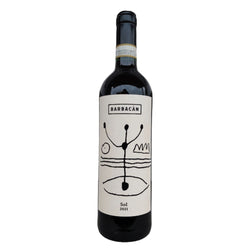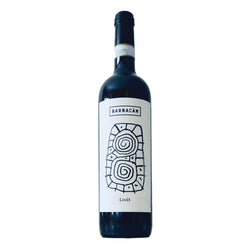Barbacàn è una piccola cantina a gestione familiare della Valtellina che affonda le radici in profondità nella storia del territorio. La sua produzione è essenziale e di estrema tipicità territoriale, ben sintetizzata dal binomio Nebbiolo e Alpi. L’approccio rigoroso e tradizionalista, ispirato dall’identità storica e culturale degli erti e rocciosi terrazzamenti valtellinesi, è evidente a partire dal nome di questa realtà artigianale che, nel dialetto locale, indica i muri di sostegno di alcune vecchie costruzioni presenti tra i vigneti. La cantina Barbacàn è gestita dal vignaiolo Angelo Sega e dai figli Luca e Matteo, che si occupano in autonomia di tutte le fasi della produzione, dall’eroica coltivazione delle viti sui ripidi pendii alpini fino all’imbottigliamento. I vigneti della famiglia si trovano nella frazione di San Giacomo di Teglio, nel cuore della sottozona Valgella, per un totale di 6 ettari disposti sui tradizionali pendii terrazzati. I migliori appezzamenti di questa micro proprietà sono quelli identificati con i toponimi Söl e Piza Mej, veri e propri cru aziendali, situati a circa 500 metri di altitudine. Nel completo rispetto delle tradizioni e dell’eco-sistema, l’approccio in vigna prevede l’utilizzo di basse quantità di rame e zolfo, solo quando necessario, evitando non solo pesticidi ed erbicidi, ma anche concimazioni e irrigazioni. In cantina le fermentazioni avvengono spontaneamente, sfruttando solamente i lieviti indigeni, e per gli affinamenti si prediligono grandi botti di rovere. I vini Barbacàn sono in grado di esprimere in maniera diretta e profonda la straordinaria realtà vitivinicola della Valtellina. Nascono da sole uve Chiavennasca, il tipico Nebbiolo della montagna valtellinese, di cui la famiglia Sega custodisce oltre 20 cloni differenti. La volontà di riscoprire e assaporare gli archetipi del territorio attraverso la rigorosa tipicità dei vini prodotti è chiaramente manifestata nelle etichette, che riproducono le incisioni rupestri lasciate dagli antichi popoli del Neolitico. I rossi prodotti sembrano infatti rievocare le immagine preistoriche e i paradigmi primari di un territorio che, nel calice, schiude parte dei suoi più profondi segreti.
Barbacàn è una piccola cantina a gestione familiare della Valtellina che affonda le radici in profondità nella storia del territorio. La sua produzione è essenziale e di estrema tipicità territoriale, ben sintetizzata dal binomio Nebbiolo e Alpi. L’approccio rigoroso e tradizionalista, ispirato dall’identità storica e culturale degli erti e rocciosi terrazzamenti valtellinesi, è evidente a partire dal nome di questa realtà artigianale che, nel dialetto locale, indica i muri di sostegno di alcune vecchie costruzioni presenti tra i vigneti. La cantina Barbacàn è gestita dal vignaiolo Angelo Sega e dai figli Luca e Matteo, che si occupano in autonomia di tutte le fasi della produzione, dall’eroica coltivazione delle viti sui ripidi pendii alpini fino all’imbottigliamento. I vigneti della famiglia si trovano nella frazione di San Giacomo di Teglio, nel cuore della sottozona Valgella, per un totale di 6 ettari disposti sui tradizionali pendii terrazzati. I migliori appezzamenti di questa micro proprietà sono quelli identificati con i toponimi Söl e Piza Mej, veri e propri cru aziendali, situati a circa 500 metri di altitudine. Nel completo rispetto delle tradizioni e dell’eco-sistema, l’approccio in vigna prevede l’utilizzo di basse quantità di rame e zolfo, solo quando necessario, evitando non solo pesticidi ed erbicidi, ma anche concimazioni e irrigazioni. In cantina le fermentazioni avvengono spontaneamente, sfruttando solamente i lieviti indigeni, e per gli affinamenti si prediligono grandi botti di rovere. I vini Barbacàn sono in grado di esprimere in maniera diretta e profonda la straordinaria realtà vitivinicola della Valtellina. Nascono da sole uve Chiavennasca, il tipico Nebbiolo della montagna valtellinese, di cui la famiglia Sega custodisce oltre 20 cloni differenti. La volontà di riscoprire e assaporare gli archetipi del territorio attraverso la rigorosa tipicità dei vini prodotti è chiaramente manifestata nelle etichette, che riproducono le incisioni rupestri lasciate dagli antichi popoli del Neolitico. I rossi prodotti sembrano infatti rievocare le immagine preistoriche e i paradigmi primari di un territorio che, nel calice, schiude parte dei suoi più profondi segreti.




